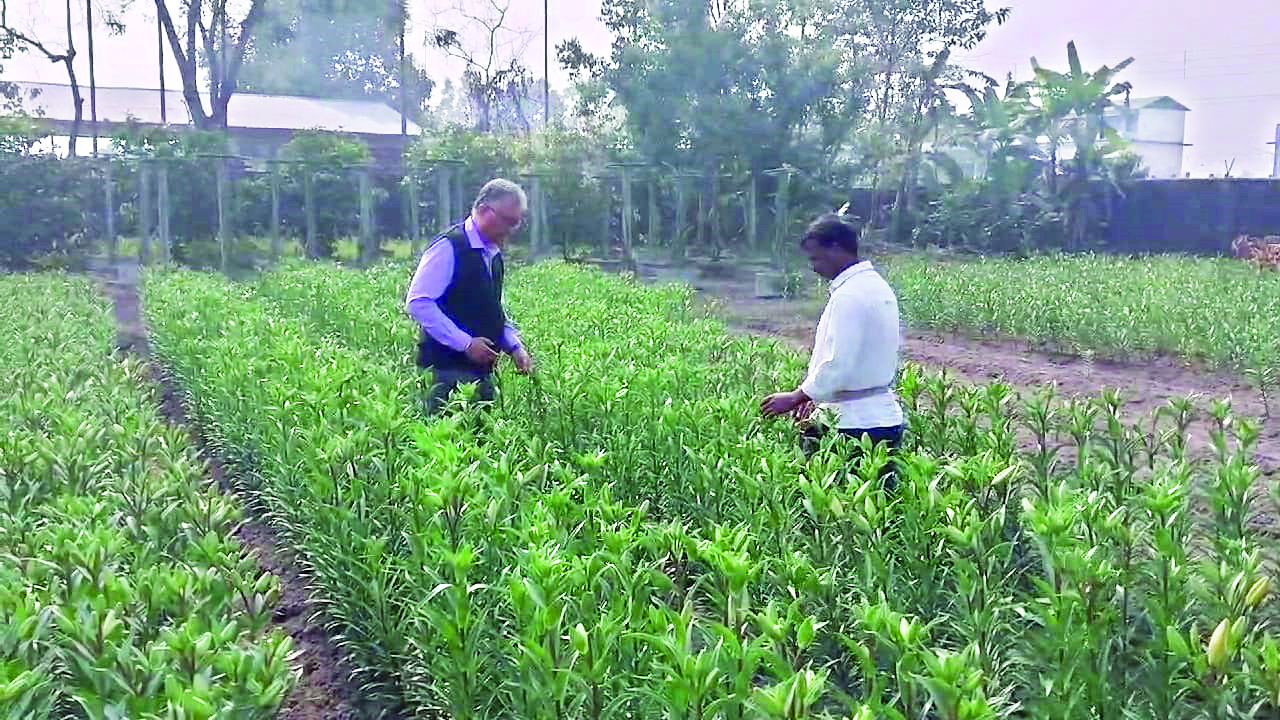State helps Siliguri entrepreneur in lily flower cultivation

Siliguri: The state government is showing another path of income through lily flower cultivation. Utpal Banerjee, an entrepreneur from Siliguri, started lily flower cultivation with about 10,000 bulbs with the help of West Bengal State Food Processing Industries and Horticulture department.
He has involved numerous farmers for this work in his farm at Bandhunagar area in Jalpaiguri. Double income is possible through this cultivation, said Banerjee.
“In terms of agriculture, the development that has taken place in North Bengal in the past four years is unprecedented. The government of Bengal helped a lot in this field. Anyone can surely build a career with lily cultivation. Besides, double profit can be generated with this cultivation,” Banerjee added.
Utpal Banerjee, a resident of College Para in Siliguri, started farming in 2004. Every year, he cultivates different varieties of vegetables and flowers on his farm situated in Bandhunagar in Jalpaiguri and in Cooch Behar.
During this winter season, he started lily cultivation in November in Bandhunagar. He started the cultivation with 10,000 bulbs by investing Rs 2.5 lakh. He is expecting a profit of nearly Rs 6 lakh. Around 12 farmers are working on his farm.
West Bengal State Food Processing Industries and Horticulture department has given subsidy and 50 per cent incentive for the cultivation. It took around three months for the flowers to blossom.
Utpal is cultivating two varieties of lily flowers through the open field cultivation process — one is Asiatic and another is Oriental — in white, pink and yellow colours.
Asiatic lily takes less time as compared to oriental flowers. After planting, the bulbs blossom into flowers within seven days. The cost of each bulb is Rs 20 and each flower stick is sold at Rs 40.
He has already started selling flowers to different markets in North Bengal and also to neighbouring countries like Nepal and Bhutan. Demand for this flower increases during the wedding season.



